
In the world of business, a strong online presence can make or break your success. With 97% of people doing their research online before making a purchase, having a well-designed and optimized B2B website is more important than ever. But how do you create a website that not only attracts your target audience but also converts them into paying customers? In this ultimate guide, we’ll explore the key elements of B2B industry web development and design, dive into the latest trends, and reveal the best practices for search engine optimization to ensure your website stands out from the competition.
Short Summary
- B2B web development and design is key for creating successful websites.
- Incorporate the latest trends in 2023, such as personalization and accessibility, to stand out from competition & boost user experience.
- Monitor website performance with analytics tools & learn from B2B web design case studies to maximize effectiveness of your website.
B2B Web Development and Design: The Key Elements
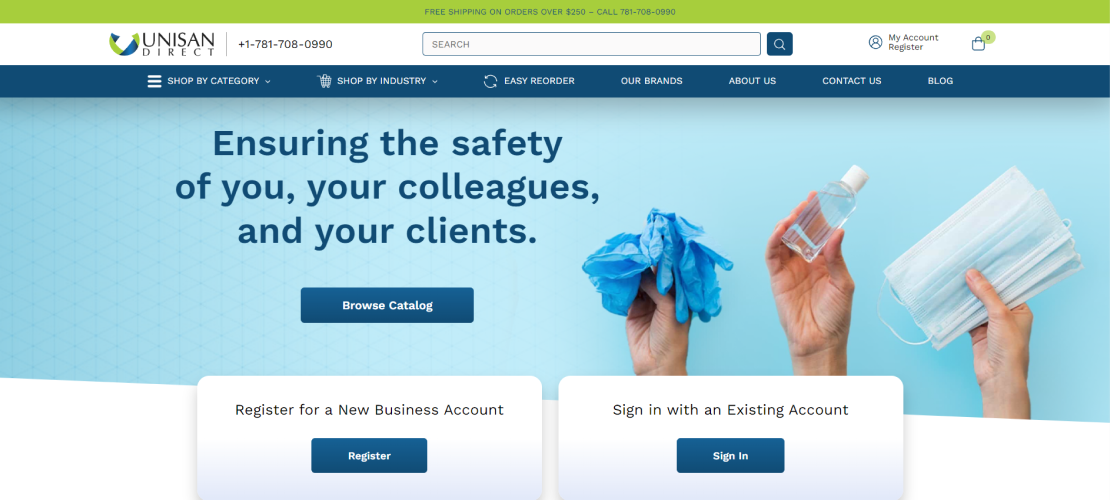
Creating a successful B2B website goes beyond just having an attractive design; it requires a strategic approach that focuses on user experience, responsive design, and content strategy. A successful website is crucial for establishing credibility and trust with your audience, as it serves as the digital representation of your company’s brand and messaging.
In the competitive landscape of B2B businesses, your website is the cornerstone of your digital marketing efforts, including internet marketing and social media marketing. It should not only inform potential customers about your products and services, but also persuade them to take action, whether it’s requesting a quote, signing up for a newsletter, or making a purchase.
To achieve this, a skilled web developer should focus on business to business web development and design, zeroing in on persona-driven content and building strong customer relationships.
User Experience (UX)
User experience is paramount for B2B websites, as it can make or break your ability to engage visitors and convert them into customers. A great user experience encompasses:
- Seamless navigation
- Visually appealing design elements
- Interactive features that keep users on your site longer, allowing them to learn more about your business before committing to a purchase.
Visuals such as:
- screenshots
- illustrations
- videos
- animations
Play a crucial role in enhancing the user experience on your B2B website. They not only showcase your product or service in action, but also support your copy and make your pages more engaging.
In addition, strong calls-to-action (CTAs) should be strategically placed throughout your website in spots that make sense for your target market, guiding users through the customer journey and ultimately leading them to become paying customers.
Responsive Design
In the digital age, B2B websites must cater to a diverse range of devices, including smartphones, tablets, and laptops. Responsive design ensures that your website is accessible and functional on various devices, improving user experience and search engine rankings. With more than 74% of consumers likely to return to mobile-friendly websites, it’s crucial that your B2B website adapts to different screen sizes and resolutions.
Accessibility is another key component of responsive design, as it ensures your website can be used by people with disabilities. Tools like accessiBe can help make your B2B website more accessible by providing users with options to switch to a mode that suits their needs.
By prioritizing responsive design and accessibility, your B2B website will not only cater to a wider audience but also improve its search engine rankings.
Content Strategy
A well-planned content strategy is essential for attracting and retaining visitors on your B2B website. High-quality, relevant content not only provides valuable information to your audience, but also helps improve your search engine rankings. To create an effective content strategy, focus on communicating your unique value proposition and addressing the needs and pain points of your target audience through a well-crafted marketing strategy.
Regularly updating and optimizing your website content ensures that it remains fresh and relevant to your audience. This may involve reorganizing content, adding links to other useful pages and posts, or even revamping your entire website to better align with your company’s brand and goals.
Ultimately, a strong content strategy will drive organic traffic to your website and help convert visitors into customers.
B2B Web Design Trends in 2023
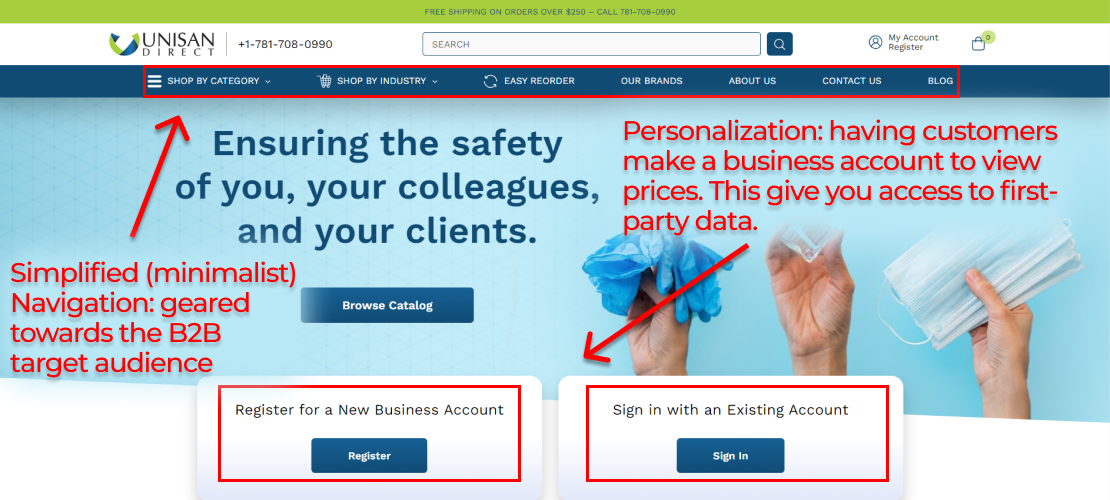
As we forge ahead into 2023, B2B web design trends continue to evolve, with a focus on minimalist design, personalization, and accessibility. Embracing these trends not only ensures that your website remains current, but also enhances user experience and caters to diverse audiences.
Staying ahead of the curve by incorporating the latest web design trends in your B2B website can help you stand out from the competition and attract your target audience. By combining cutting-edge design with a solid content strategy and SEO best practices, your B2B website will be well-equipped to drive organic traffic, generate leads, and boost conversions.
Minimalist Design
Minimalist design is all about simplifying B2B websites, making them easier to navigate and more visually appealing. By removing unnecessary elements or content that doesn’t contribute to the user’s goals, minimalist design creates a clean, uncluttered look that focuses on the essentials. This approach not only improves user experience but also enhances the overall visual appeal of your website.
Incorporating minimalist design into your B2B website can also help emphasize your brand message and value proposition, allowing users to quickly understand what your company has to offer. By focusing on the essentials and eliminating distractions, minimalist design can effectively guide users through your website, ultimately leading to higher conversion rates.
Personalization
Personalization is a powerful tool in custom web design, especially for B2B websites, as it allows you to:
- Tailor your website content to individual users
- Enhance engagement and conversion rates
- Leverage customer data to create a unique browsing experience for each user
- Provide content that is relevant and interesting to them
By utilizing personalization, you can enhance the overall user experience and drive better results for your business.
Some examples of personalization include providing tailored product recommendations, targeted ads, and customized web pages based on user behavior, preferences, and demographic information. By incorporating personalization into your B2B website, you can create a more engaging and effective user experience that helps convert visitors into customers.
Accessibility
Accessibility is a crucial aspect of B2B web design, as it ensures that your website can be used by people with disabilities, promoting inclusivity and expanding your potential customer base. Accessible design involves considering the needs of users with visual, auditory, or cognitive disabilities, and implementing features that make your website usable for everyone.
Incorporating accessibility into your B2B website not only demonstrates your commitment to inclusivity, but also has the potential to boost your search engine rankings. By prioritizing accessibility in your web design, you can reach a wider audience and create a more inclusive online experience for all users.
SEO Best Practices for B2B Websites
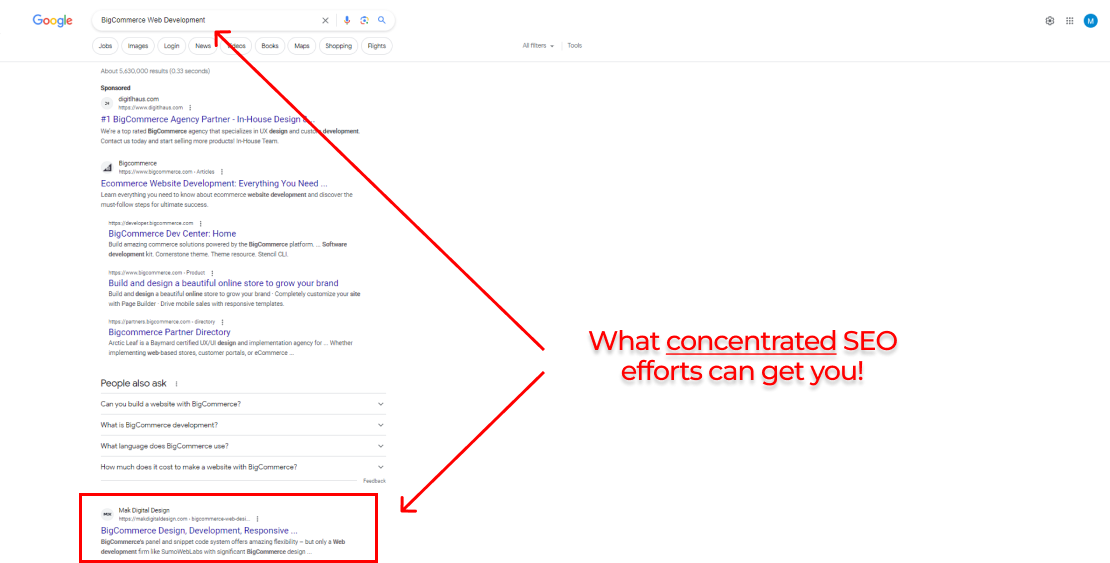
Search engine optimization (SEO) is a critical component of any successful B2B website, as it helps improve your visibility in search engine results pages (SERPs) and drive organic traffic to your site. To maximize your website’s SEO performance, it’s essential to focus on three key areas: keyword research, on-page optimization, and off-page optimization.
By following SEO best practices, you can:
- Improve your search engine rankings
- Attract more qualified traffic to your website
- Increase conversion rates
- Ultimately, increase revenue for your business.
Keyword Research
Keyword research is a fundamental aspect of SEO, as it helps you identify the most relevant terms and phrases to target in your website content. By selecting the right keywords, you can attract the right audience and increase the likelihood of converting visitors into customers. The process of keyword research involves making a list of topics related to your business, expanding each topic with relevant phrases, finding related search terms, analyzing keyword strength, and determining your industry ranking.
Various keyword research tools are available to help you assess the search volume and competition for each keyword, enabling you to choose the most effective terms to target in your content. By incorporating the right keywords into your website, you can improve your search engine rankings and attract more qualified traffic to your site through search engines.
On-Page Optimization
On-page optimization is another critical aspect of SEO, as it involves optimizing the content and HTML source code of your website to improve its search engine rankings. This includes optimizing meta tags, headings, and content for your target keywords, as well as ensuring your site loads quickly and is easy to navigate.
In addition to optimizing your content and HTML, on-page SEO also involves improving your website’s user experience by incorporating visually appealing design elements and ensuring that your site is accessible to all users. By focusing on on-page optimization, you can boost your search engine rankings and attract more relevant traffic to your website.
Off-Page Optimization
Off-page optimization refers to the actions you take outside of your website to improve its search engine rankings. This primarily involves:
- Building backlinks from other reputable websites, which helps to boost your website’s authority and visibility in search engine results
- Promoting your content on social media
- Directory submissions
- Guest blogging
By focusing on off-page optimization, you can increase your website’s authority and visibility, ultimately driving more organic traffic and improving your search engine rankings. Combining off-page optimization with a strong on-page SEO strategy can help you maximize the effectiveness of your B2B website and generate more leads and sales for your business.
Choosing the Right B2B Web Design Agency
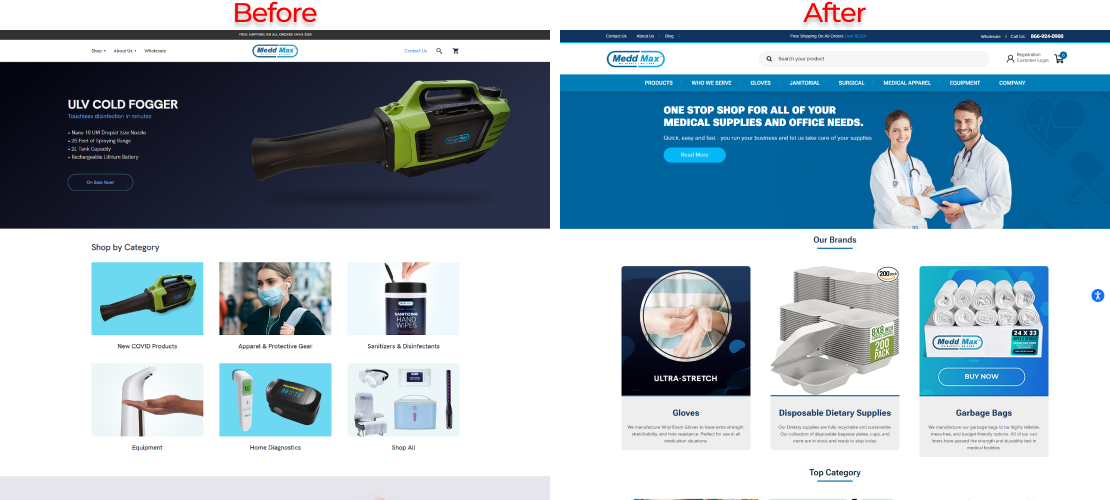
Selecting the right B2B web design agency is essential to the success of your website project. To find the best fit for your business, consider assessing the agency’s expertise, reviewing their portfolio, and comparing their pricing models. These factors can help you determine whether the agency has the necessary skills and experience to create a successful B2B website that meets your specific needs and goals.
By carefully evaluating potential web design companies, you can ensure that your B2B website project is in the hands of a professional web agency who understands your industry and can create a successful web design that not only looks great but also drives results for your business.
Assessing Expertise
One of the most important factors to consider when choosing a B2B web design agency is their level of expertise. This includes their:
- Web strategy
- Design skills
- Development skills
- Skills of their team members
Assessing the agency’s expertise can help you determine whether they have the necessary knowledge and experience to create a successful B2B website that meets your specific needs and goals.
In addition to evaluating the agency’s expertise, it’s also important to consider their track record of success in working with businesses within your industry. This can provide valuable insight into their ability to create a website that not only looks great, but also effectively communicates your unique value proposition and generates results for your business.
Reviewing Portfolios
Reviewing the agency’s portfolio is another essential step in choosing the right B2B web design agency. By examining their past work, you can gain a better understanding of their design style, the complexity of their projects, and the level of detail they put into their work. This information can help you determine whether the agency’s design approach and style align with your company’s brand and goals.
When reviewing portfolios, pay attention to the overall impact of the design, as well as the consistency and user experience of the websites they’ve created. This can provide valuable insight into the agency’s ability to create a visually appealing and functional website that effectively communicates your brand message and engages your target audience.
Comparing Pricing Models
Finally, comparing pricing models is an important aspect of selecting the right B2B web design agency for your project. Different agencies may offer a variety of pricing models, such as project-based or flat-fee pricing, hourly rate pricing, and fixed-price models. By comparing these models, you can determine which one best suits your budget and project requirements.
Keep in mind that the cost of a web design project will vary depending on factors like the agency’s expertise, the complexity of your project, and the level of customization required. It’s important to find an agency that offers the best value for your investment while still meeting your specific needs and goals.
Measuring the Success of Your B2B Website

To ensure the ongoing success of your B2B website, it’s crucial to continually measure its performance and make data-driven decisions to optimize it. This involves tracking key performance indicators (KPIs) and using analytics tools to monitor your website’s performance. By keeping a close eye on these metrics, you can identify areas for improvement and make necessary adjustments to your website and marketing strategies.
Measuring the success of your B2B website not only helps you stay ahead of the competition, but also ensures that your website continues to drive results for your business. By staying informed about your website’s performance and making data-driven decisions, you can maximize its effectiveness and achieve your business goals.
Key Performance Indicators (KPIs)
Key performance indicators (KPIs) are essential metrics that help you evaluate the effectiveness of your B2B website in achieving its goals, such as generating leads, increasing conversions, and improving search engine rankings. Some common KPIs include website traffic, conversion rates, and customer engagement. By tracking these metrics, you can gain valuable insights into the performance of your website and make data-driven decisions to optimize it.
Using KPIs to measure the success of your B2B website enables you to:
- Identify areas for improvement
- Make necessary adjustments to your website and marketing strategies
- Stay informed about your website’s performance
- Make data-driven decisions
- Maximize its effectiveness
- Achieve your business goals
Analytics Tools
Analytics tools play a crucial role in helping you monitor the performance of your B2B website and make data-driven decisions to optimize it. Popular analytics tools like Google Analytics, Adobe Analytics, and Mixpanel provide valuable insights into user behavior, traffic sources, and other metrics, enabling you to optimize your website for better performance.
By using analytics tools to keep tabs on your website’s KPIs, you can gain a deeper understanding of website visitors’ behavior and traffic sources, allowing you to make necessary improvements to your website’s design, content, and SEO strategies.
Ultimately, leveraging analytics tools can help you maximize the effectiveness of your B2B website and drive results for your business.
B2B Web Design Case Studies
B2B web design case studies provide valuable insights into the real-world success of B2B websites, showcasing the strategies and techniques used to achieve their goals. By examining these case studies, you can learn from the experiences of others and apply their strategies to your own website project.
These case studies highlight the importance of a well-designed B2B website, a strong content strategy, and SEO best practices in driving organic traffic and generating leads. By understanding the success factors behind these examples, you can apply similar strategies to your own B2B website and achieve your business objectives.
Case Study #1: Unisan Direct
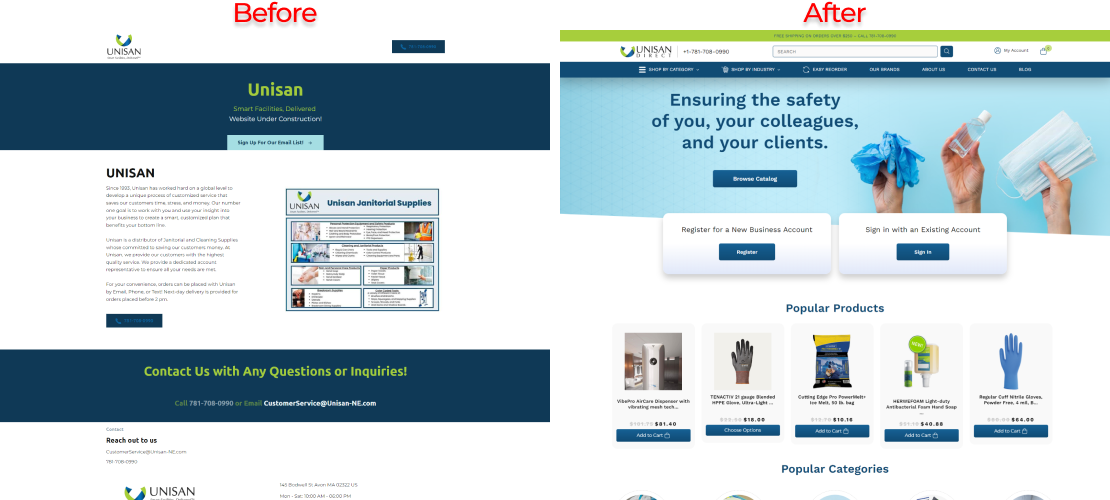
Unisan Direct, a provider of sanitation products and customized services, enlisted the expertise of MAK Digital to address challenges with their Magento-based eCommerce website. With a focus on B2B and B2C capabilities, the project aimed to overcome setbacks and enhance their online presence. The collaboration resulted in a transformed website, showcasing products, improving navigation for diverse customers, and boosting search engine rankings through an optimized content strategy. This case study exemplifies the significance of a well-designed B2B website in elevating user experience and achieving business objectives.
Case Study #2: Medd Max
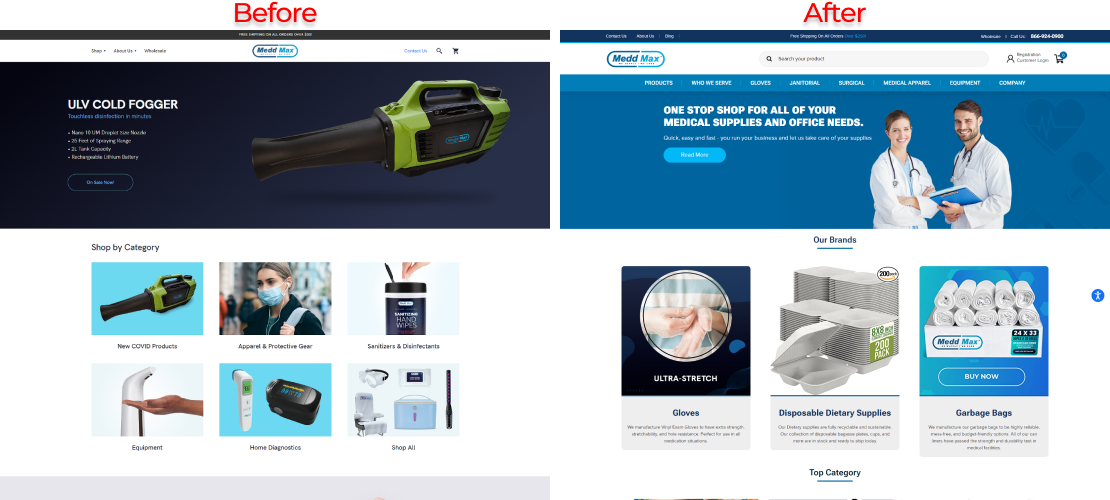
Medd Max, a B2B-focused company specializing in competitive pricing and top-quality products, began their eCommerce journey on Wix. However, their B2C site lacked essential features and design, hindering their performance compared to competitors. Seeking improvement, Medd Max partnered with MAK Digital to enhance their website’s functionality and performance. Through significant changes facilitated by MAK Digital, Medd Max’s B2B site underwent a transformative revamp, aligning with industry standards and delivering an exceptional user experience. The collaboration resulted in an upgraded platform that surpassed their initial Wix site, improving competitiveness and strengthening their online presence in the B2B marketplace.
By teaming up with MAK Digital, Medd Max successfully revitalized their B2B website, achieving remarkable results in functionality, performance, and user experience. This case study highlights the importance of investing in an optimized B2B website to stand out in a competitive market, attract customers, and enhance overall business success.
Summary
In conclusion, a successful B2B website requires a strategic approach that focuses on user experience, responsive design, and content strategy. By staying informed about the latest web design trends and employing SEO best practices, you can create an effective and engaging B2B website that drives results for your business. Remember to carefully choose the right web design agency, measure the success of your website using KPIs and analytics tools, and learn from real-world case studies to continuously improve your online presence. By taking these steps, you’ll be well on your way to creating a B2B website that stands out from the competition and achieves your business goals.
Frequently Asked Questions
What is B2B in web development?
B2B web design is the process of designing websites for businesses with the goal of attracting potential customers and providing easy to navigate information about their products or services.
It is important to ensure that the website is designed in a way that is visually appealing and easy to use. This includes making sure that the navigation is intuitive and that the content is organized in a way that makes it easy to find what the user is looking for.
What does B2B mean in design?
B2B stands for Business-to-Business and refers to the exchange of products, services or information between businesses, as opposed to Business-to-Consumer (B2C), which involves companies producing products and services for individual customers.
In terms of design, it requires a specialized approach focused on best practices, usability, SEO and conversion rate optimization.
How do you structure a B2B website?
For B2B websites, the key pages to consider are Home, Solutions, Product, and About. Each page should contain messaging that speaks to different audiences and provide a clear conclusion in the first sentence. Keep the tone casual and provide high-level value propositions on top-level pages.
What are the key elements of B2B web development and design?
User experience, responsive design and content strategy are the key elements of B2B web development and design, ensuring a seamless user journey and creating positive online experiences.
These elements are essential for creating a successful website that meets the needs of the user and provides a positive experience. They help to ensure that the website is easy to navigate, visually appealing and provides the user with the information they need.
What are the B2B web design trends for 2023?
In 2023, B2B web design trends focus on minimalism, personalization and accessibility for optimal user experience.
These trends are driven by the need to create a more user-friendly experience for customers. Companies are looking for ways to make their websites easier to navigate and more visually appealing. They are also striving to make money.
Mitch is an experienced eCommerce Project Manager specializing in delivering seamless online experiences and driving digital growth. With expertise in project planning, platform optimization, and team collaboration, Mitch ensures every eCommerce initiative exceeds expectations. Passionate about innovation and results, Mitch helps businesses stay ahead in the dynamic digital landscape.

